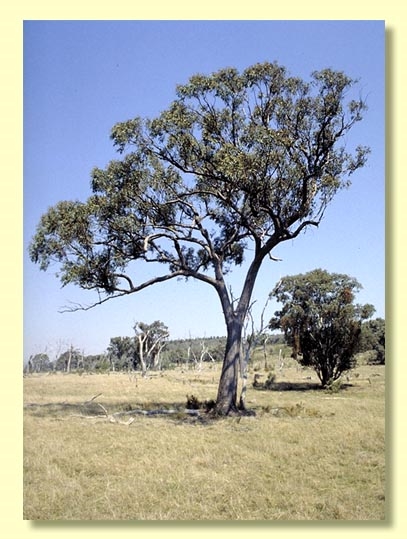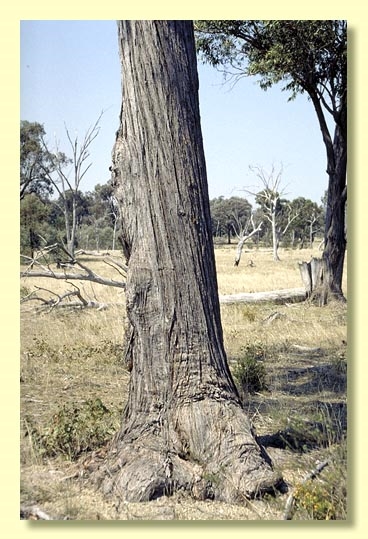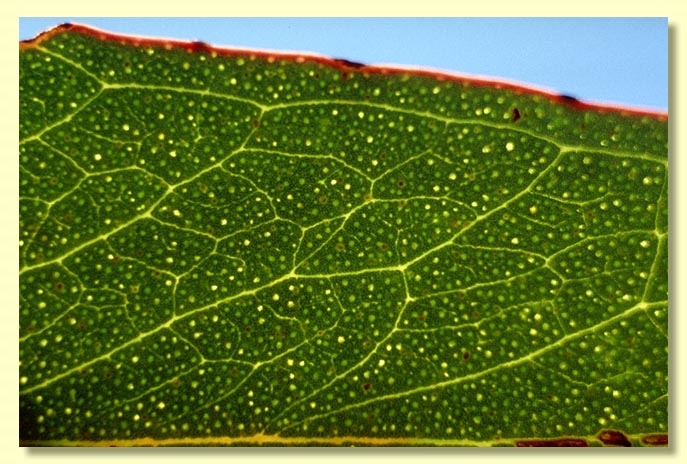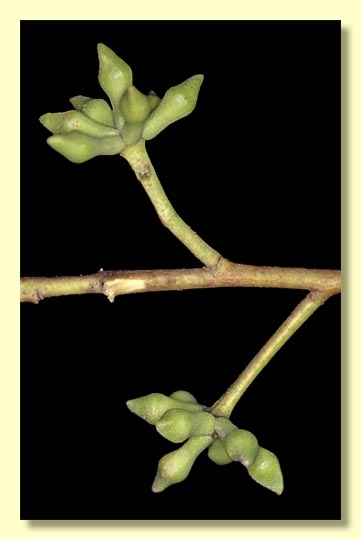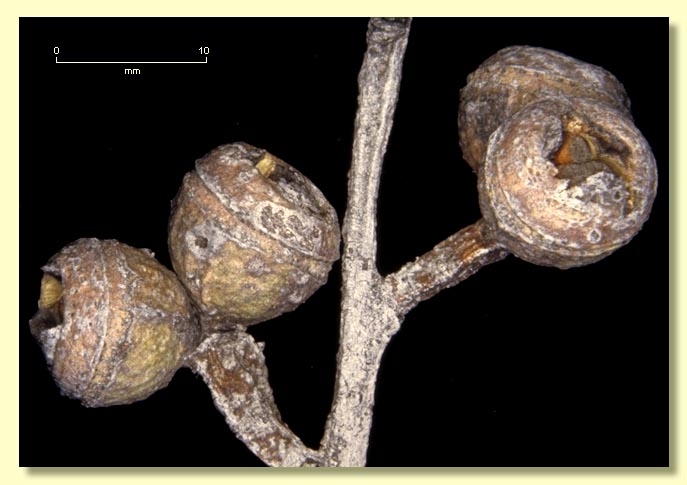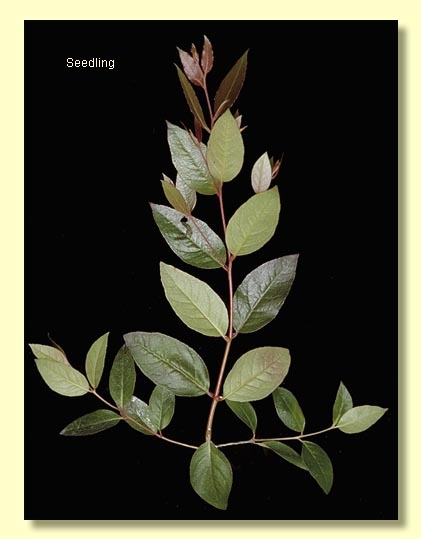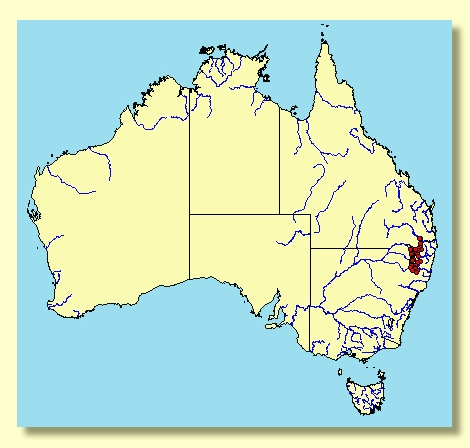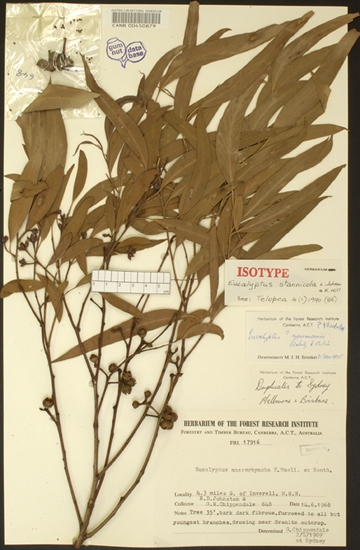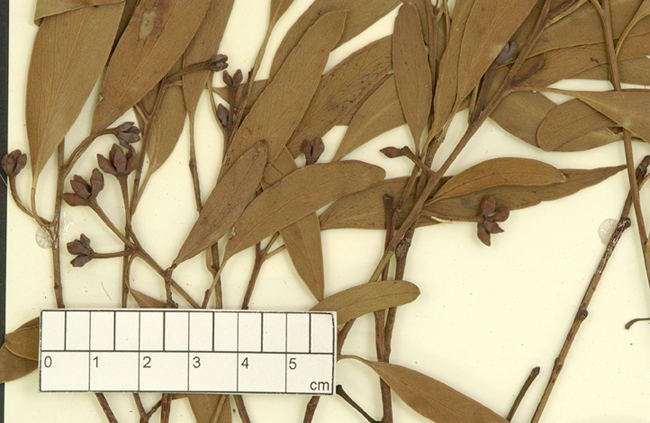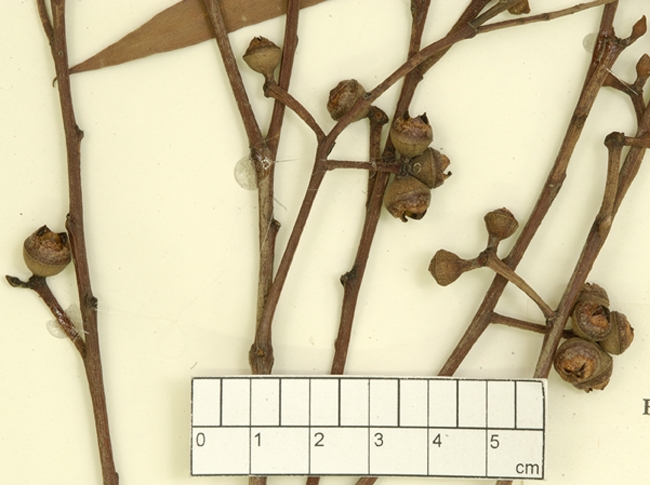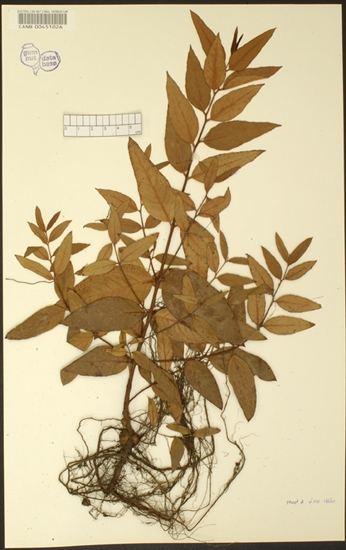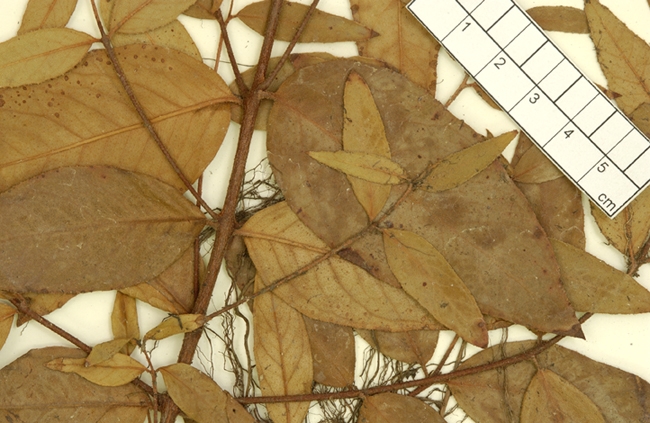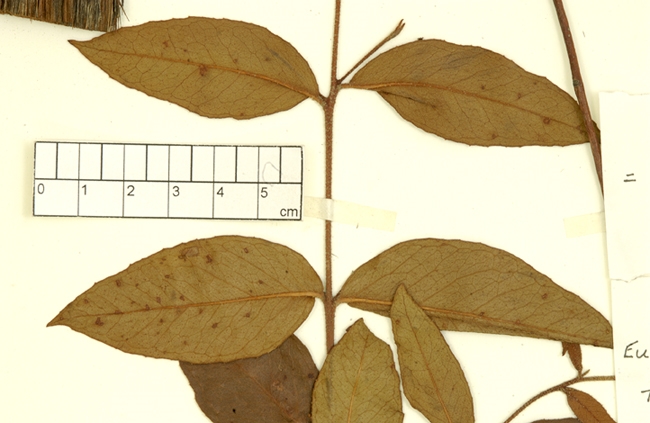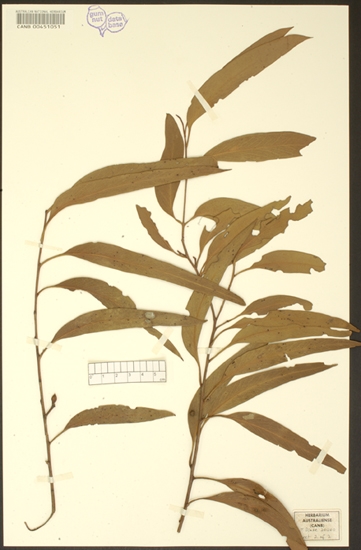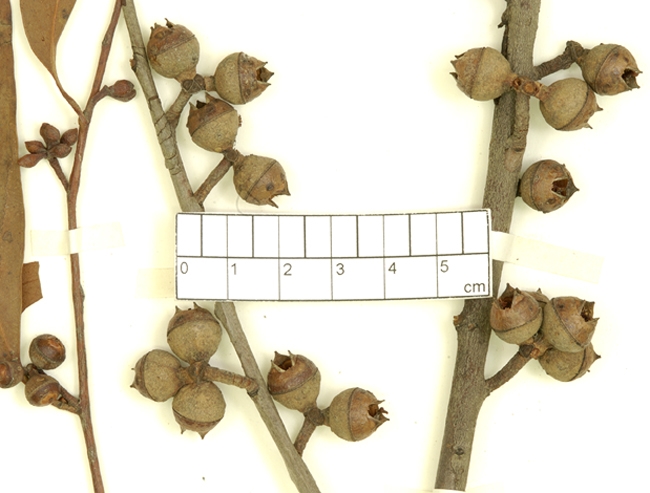Euclid - Online edition
Eucalyptus youmanii
Eucalyptus | Eucalyptus | Capillulus | Pachyphloius
T: Rosehill, 10.5 km SW of Guyra, NSW, 2 Nov. 1929 (published as Oct. 1929), T.Youman, E.N.McKie & W.F.Blakely s.n.; holo: NSW; iso: K.
Eucalyptus stannicola L.A.S.Johnson & K.D.Hill, Telopea 4: 86 (1990). T: NSW, North Western Slopes, 4.3 miles (6.8 km) S of Inverell, 14 June 1968, R.D.Johnston & G.M.Chippendale 648; holo: NSW; iso: CANB.
Bark rough to small branches, coarsely stringy and deeply, longitudinally furrowed, grey to grey-brown.
Juvenile growth (coppice or field seedlings to 50 cm): stem rounded in cross-section; juvenile leaves always petiolate, opposite for 4 to 9 nodes then alternate, ovate to lanceolate, 5–11 cm long, 1.5–4 cm wide, base rounded or tapering to petiole, discolorous, green; new growing tips, stems, petioles and margin and midrib of leaves scabrid for at least 17 nodes, ultimately glabrous.
Adult leaves alternate, petiole 0.7–2 cm long; blade lanceolate to falcate, 5.5–16 cm long, 1.2–3.2 cm wide, base oblique or tapering to petiole, concolorous, or slightly discolorous, glossy or dull, green to blue-green or grey-green or blue-grey, side-veins acute, sparsely to moderately reticulate, intramarginal vein parallel to and remote from margin, oil glands island.
Inflorescence axillary unbranched, peduncles 0.5–2.3 cm long usually flattened to angular, buds in umbels of 7, sessile or with pedicels to 0.6 cm long. Mature buds ovoid to fusiform, or diamond-shaped, 0.7–0.9 cm long, 0.4–0.5 cm wide, green, smooth, with longitudinal angles, scar absent, operculum conical, stamens irregularly flexed, anthers reniform to cordate, versatile, dorsifixed, dehiscing by confluent slits, style long, stigma tapered, locules 3, 4 or 5, the placentae each with 2 vertical ovule rows. Flowers white.
Fruit sessile or on pedicels to 0.5 cm long, hemispherical, 0.4–0.8 cm long, 0.7–1.3 cm wide, slightly ridged longitudinally, disc broad and raised-convex to oblique, valves 3, 4 or 5, exserted.
Seeds brown, 1.5–3 mm long, pyramidal or obliquely pyramidal, dorsal surface smooth, hilum terminal.
Cultivated seedlings (measured at ca node 10): cotyledons reniform; stems rounded in cross-section, stellate-hairy; leaves opposite and shortly petiolate for ca 4 to 7 nodes then becoming alternate, ovate-lanceolate, 5–11 cm long, 2–5 cm wide, base rounded to tapering, margin irregular to entire, apex pointed, discolorous, glossy, bright green above, paler beneath; lamina sparsely to moderately stellate-hairy on both surfaces, especially on venation.
Flowering has been recorded in February and March.
A small to medium-sized stringybark tree of the Northern Tablelands of New South Wales extending into Queensland to north-west of Stanthorpe. Eucalyptus youmanii is fully rough-barked with a green to grey green crown, unbels in 7s borne on flattened/angular peduncles, usually pedicellate ovoid buds that are angled, and fruit 0.7–1.3 cm wide. Juvenile leaves are at least slightly scabrid/hairy for at least 0.5 m of growth, with leaves 1.5–4 cm wide.
In the general area where E. youmanii grows there are eleven other stringybark species. Of these E. williamsiana is the most closely related; it differs from E. youmanii in having larger, more coarse ovate to elliptical juvenile leaves 3–7.5 cm wide and sessile fruit. Eucalyptus caliginosa has smaller fruit (0.6–0.8 cm wide) and buds that are not angled. Eucalyptus agglomerata, rare in this area but common further south, has sessile fruit so closely packed together that they are deformed, and smaller juvenile leaves. The mallee or small tree E. ligustrina has more crowded and commonly smaller fruit than E. youmanii and smaller adult and juvenile leaves. E. laevopinea differs in having branches with smooth bark, buds without angles but has fruit of similar size to E. youmanii. E. macrorhyncha subsp. macrorhyncha has similar fruit to E. youmanii but has buds that lack the angularity and are often beaked. Another tablelands species, E. cameronii, differs in its elliptical, smaller and only weakly scabrid juvenile leaves, smaller non-angled buds and fruit less than 0.8 cm diameter.
The more coastal Eucalyptus tindaliae differs from E. youmanii in having ovoid buds without angles and has juvenile leaves ovate-lanceolate and opposite for many pairs, prominently hairy/scabrid, but has similar sized fruit. Another more easterly species E. eugenioides differs from E. youmanii in having thin-textured adult leaves and smaller fusiform buds without angles, and often smaller fruit. Other species of stringybark in this area have fruit smaller (not overlapping in dimension) than those of E. youmanii.
MORE ABOUT STRINGYBARKS

